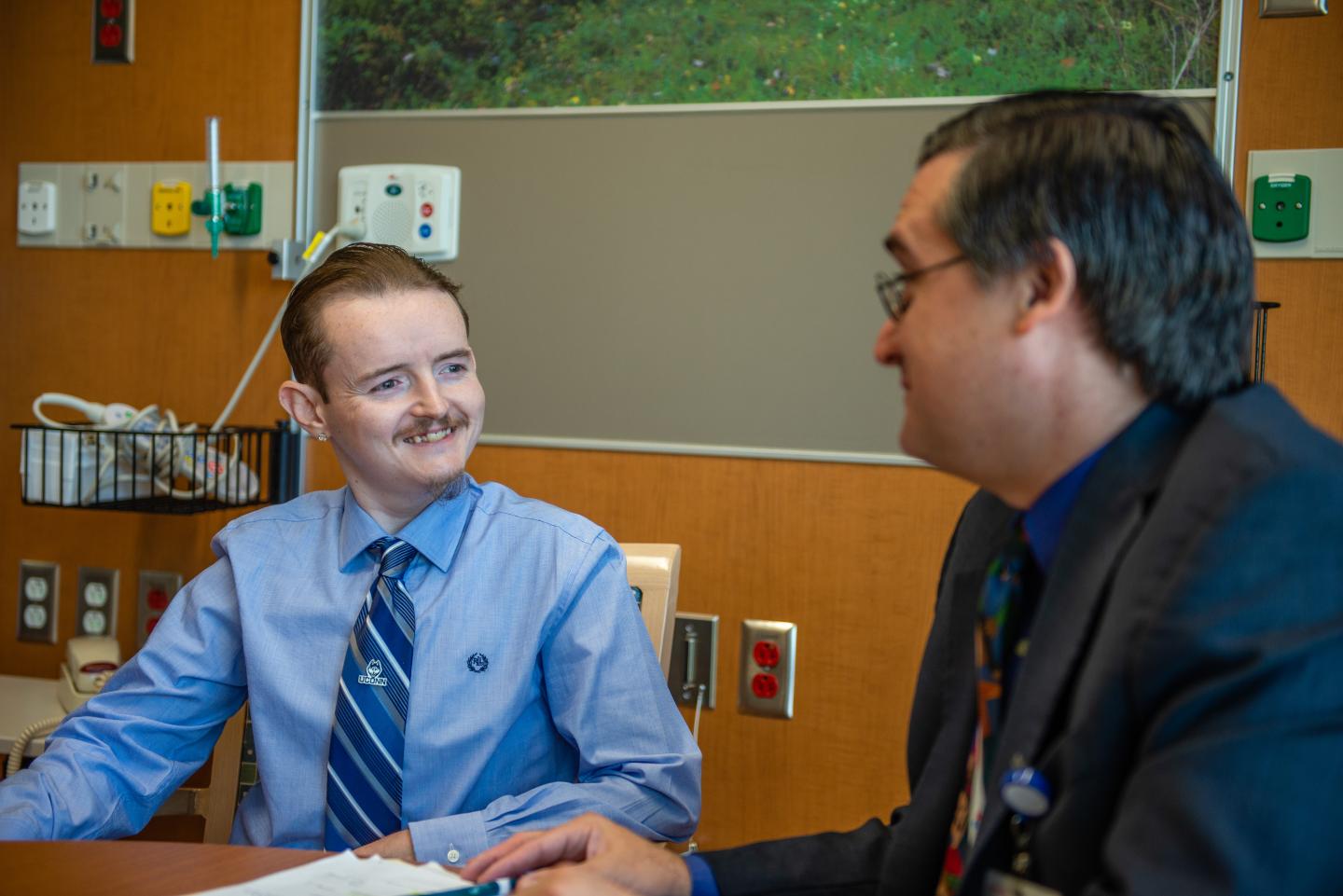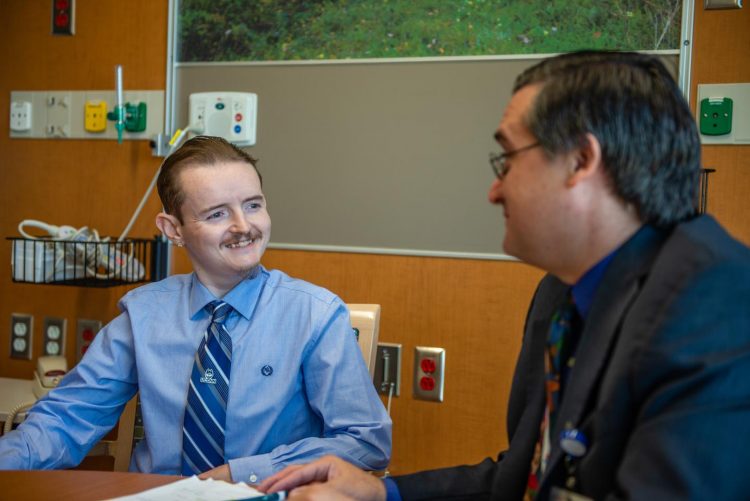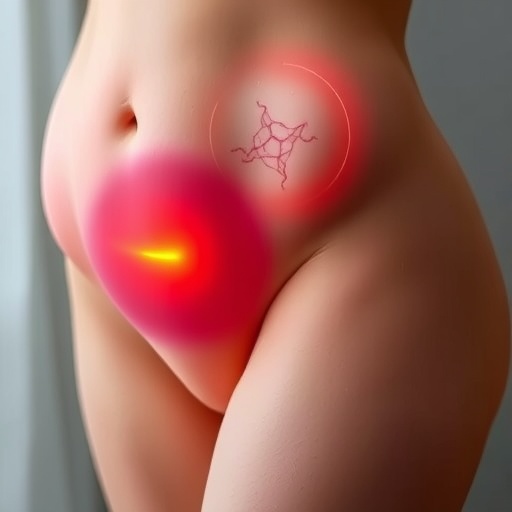Consuming cornstarch every few hours has been the only available option for survival

Credit: Tina Encarnacion/UConn Health
At the Association for Glycogen Storage Disease’s 41st Annual Conference, Dr. David Weinstein of UConn School of Medicine and Connecticut Children’s presented his groundbreaking, one-year clinical trial results for the novel gene therapy treatment for glycogen storage disease (GSD).
The rare and deadly genetic liver disorder, GSD type Ia, affects children from infancy through adulthood, causing dangerously low blood sugar levels and constant dependence on glucose consumption in the form of cornstarch every few hours for survival. If a cornstarch dose is missed, the disease can lead to seizures and even death.
Weinstein, whose team first administered the investigational gene therapy at UConn John Dempsey Hospital in Farmington, Connecticut, on July 24, 2018, calls the results “remarkable.”
One year after patient Jerrod Watts first received the GSD vaccine during a 30-minute infusion, he is completely off of cornstarch. In addition to totally stopping daily cornstarch consumption, Watts has experienced normal regulation of his blood glucose levels, weight loss, increased muscle strength, and marked improvement in his energy.
“The clinical trial is going better than expected. The therapy is transforming patient lives,” says Weinstein. “We have seen all of the patients wean their therapy with some already discontinuing treatment. Missed cornstarch doses no longer are resulting in hypoglycemia, which previously could have been life threatening.”
Weinstein, the clinical trial’s lead investigator, is pediatric endocrinologist-scientist who cares for more than 700 GSD patients from 51 countries as director of the Glycogen Storage Disease Program at Connecticut Children’s and UConn Health — the largest center in the world for the care and treatment of this condition.
The clinical trial, conducted in conjunction with the biopharmaceutical company Ultragenyx, originally set out to simply test the safety and dosage of the gene therapy for three patients with GSD Type Ia.
The gene therapy works by delivering a new copy of a gene to the liver via a naturally occurring virus. Administered through the patient’s bloodstream, the new copy replaces deficient sugar enzymes caused by the disease and jump starts the body’s glucose control.
Both Weinstein and Watts were surprised by Watts’ response to the gene therapy.
“We were just making sure it was safe for humans to take, that was our initial goal. The results are way beyond my imagination,” says Weinstein. “The patients who are finishing the first year got what we all thought was a test dose — one-third strength — yet the response has been dramatic. They can now go through the night without any treatment and they wake up clinically well.”
Prior to the treatment, Watts was consuming more than 400 grams of cornstarch per day. The GSD Program’s multidisciplinary team at Connecticut Children’s provides comprehensive clinical care to patients, while the program’s research laboratories and clinical trial are located at UConn School of Medicine at UConn Health.
“The main thing I want to do is inspire hope. One of the biggest reliefs from this gene therapy is I can now sleep through the night without worrying about dying in the middle of the night. I wake up 6 to 7 hours later with normal blood sugar.”
“I’m living, breathing proof that there is a light at the end of the tunnel with GSD. I’m a completely different person now that I was a year ago. I feel like I can live a normal life and I can do anything I want to do now,” says Watts.
His message to other patients: “Please don’t give up hope.”
In addition to Watts, two other clinical trial cohort patients are seeing promising results on the lower cornstarch daily regimens. All three will participate in the next phase — a 4-year follow-up clinical trial study. In addition, three patients are enrolled in clinical trial testing a higher gene therapy dose.
“What’s exciting is if it works this well with the low dose, what does the future hold?,” says Weinstein.” If the patients are already coming off cornstarch and the labs are getting better, we just hope it will be even faster and more dramatic with the higher dose.”
“This gene therapy treatment is something we’ve worked on for 21 years. This means so much to the glycogen storage disease community,” says Weinstein. “To see patients off cornstarch and doing so well really is a culmination of an incredible journey … We feel like we’re living history.”
###
About GSD
Normal, healthy livers store excess sugar from food for the body’s future energy needs and release it into the bloodstream when needed in the form of processed sugar enzymes known as glycogen. But in GSD patients, the liver fails to break down glycogen into glucose, causing the body’s blood sugar levels to drop. GSD Type Ia, affects an estimated 6,000 patients worldwide, which is caused by a defective gene for the enzyme glucose-6-phosphatase-α (G6Pase-α) that controls sugar release from the liver. The condition was almost always fatal until 1971, when it was discovered that continuous glucose therapy could help these patients. Cornstarch therapy was introduced as a slow release form of glucose in 1982, and it allowed feeds to be spaced to every three to four hours. Thanks to cornstarch, a greater number of patients with GSD are now surviving into adulthood.
For more information visit the GSD Program’s website or call: 860-837-7800.
Media Contact
Lauren Woods
[email protected]
Original Source
https:/





